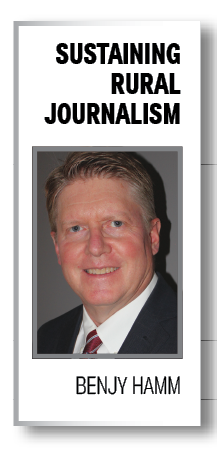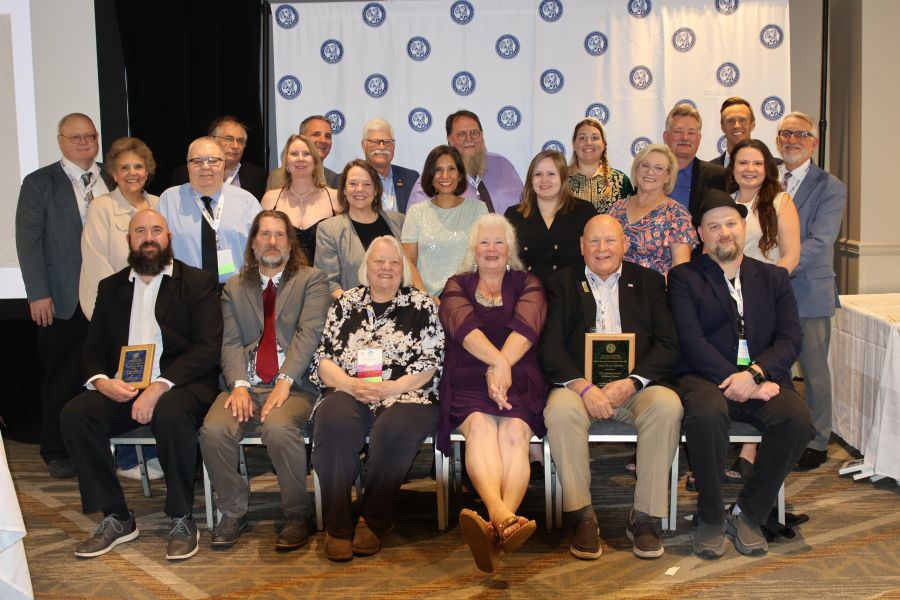Enterprise stories can help to improve news and features coverage
Benjy Hamm
Jul 1, 2024


Journalists are often so focused on the daily demands of news coverage that they might not think they have time for enterprise reporting.
The demands can be severe, and news staffs are stretched now more than ever. But we know readers like enterprise stories, and often that’s a way to go beyond the day-to-day, routine coverage and focus on stories that are compelling and informative.
Many journalists think of enterprise stories only as long investigative pieces or stories that take considerable time to report on and write. While those types of stories are important, many enterprise stories don’t have to take a lot of extra time or be so serious. They can be good feature stories to go along with the news coverage or different ways to cover news.
One of the best definitions I’ve heard of enterprise reporting came from Bruce Bradley, former president of Landmark Communications and publisher of The Virginian-Pilot. He said enterprise stories “are the stories we find rather than the stories that find us.”
By that definition, press releases, breaking news events and a lot of our day-to-day coverage includes stories that “find us.”
So, how can you and your staff identify or “find” enterprise stories in your community? First, use the power of planning to determine the best ways to cover events and topics. One of the main differences between a good newspaper and a great newspaper is planning.
We often think of news as something that is unexpected and unplanned, but a lot of coverage is actually predictable. For example, we know school will start back soon — preschool, K-12 and colleges. What are interesting stories you can write about the first days of school?
When I was an editor in South Carolina, the local school district had a number of long bus routes because of the size of the county. A reporter came up with the idea to get on the bus (with approval from the district) at the first stop on the longest route and write about that experience. It led to a much better understanding in the community about the issues with long bus rides. That same reporter also wrote about what the first day of school is like for kindergarten students and their parents by talking with them a few days before the first day and then again on that day. Another story we did was to interview cafeteria workers about what it’s like to feed hundreds of students each day, with our reporter also watching what occurred.
We also know the first day of the high school football games. At another paper where I worked, we asked a non-sports journalist to write a story about game day. She had very little interest in the games themselves, but she wondered what occurred with the players from the time the school day ended to when the game started. She found out that the local school had a detailed, step-by-step plan for how the players spent their time, and she wrote a compelling story that received a lot of comments from the community. Her story was a behind-the-scenes look that fans don’t see from the stands.
One way to generate ideas for enterprise stories is to incorporate quick brainstorming sessions into your planning meetings.
Again, planning doesn’t have to take a lot of time to be effective. And time spent on the front end of a story usually saves a lot of time later. I have often said that some of the best editing occurs before the first word is written and the first photograph is taken.
You can use brainstorming sessions to generate ideas about a specific topic or even a specific story. These sessions can be quick, often taking less than 15 minutes.
HERE ARE OTHER WAYS YOU AND YOUR STAFF CAN COME UP WITH IDEAS FOR ENTERPRISE STORIES
◆ Meet regularly with people who can offer interesting ideas and perspectives. When I became an editor for the first time, I scheduled a lunch meeting each week with someone who could help me learn more about the community, including a local historian, health officials, the county recreation director, social services experts, etc. In a short time, I developed a good understanding of the community and an extensive list of contacts and story ideas, including from many people we didn’t typically quote in the newspaper.
◆ Eat lunch in a different parts of the community instead of the usual spots. Talking to restaurant owners and customers about what’s going on in their community can lead to interesting ideas.
◆ Solicit reader-generated content. One example of a feature that has worked well is asking readers to submit photos or short stories about famous people they have met. Don’t just wait for the ideas to pour in, though. Talk to people when you’re out and about and get commitments, even before you make an announcement in the paper.
◆ Read stories from other sources, particularly non-news publications, to find ideas.
◆ When you’re driving around town, think about what you see and experience. A reporter I know got irritated at how long one stoplight in town lasted, so she wrote a story about which stoplights were the longest in town, and why. Readers loved it — and learned about the thinking that goes into setting the times, too.
These story examples aren’t serious investigative pieces or in-depth reports. We can have a separate discussion in the future about how to generate those ideas.
But the main point is that often enterprise stories can be found simply by thinking in different ways, using the power of planning, brainstorming ideas and going beyond our usual routines and sourcing.
Benjy Hamm is director of the Institute for Rural Journalism, which is based at the University of Kentucky.










